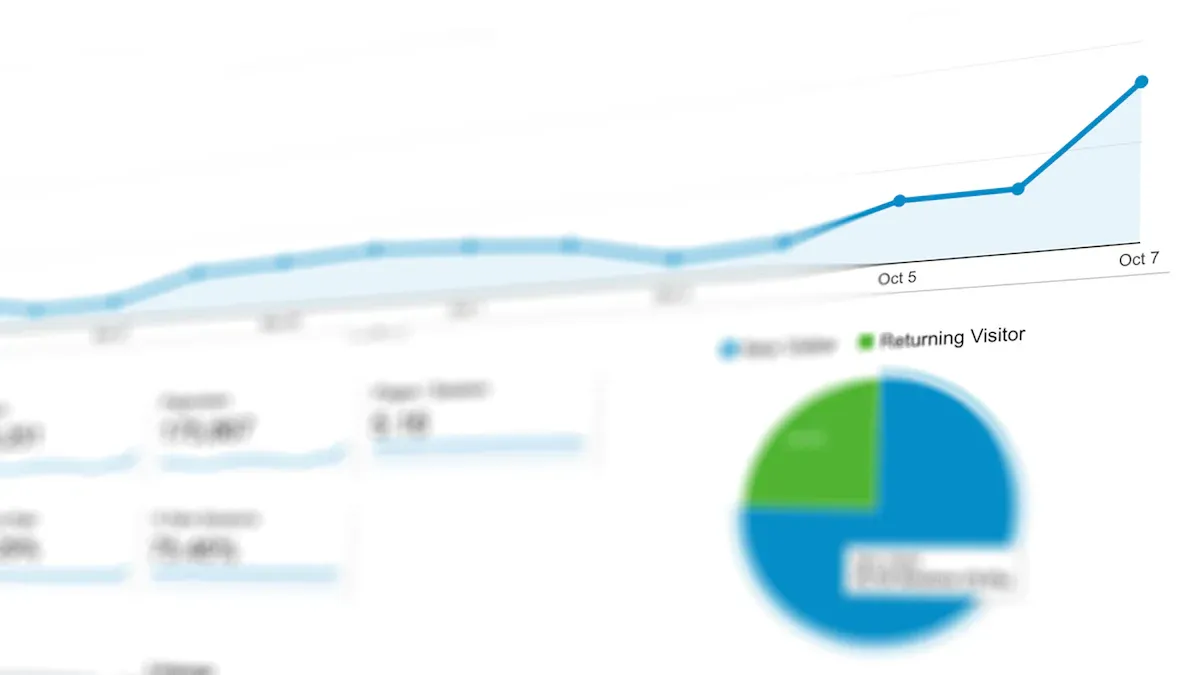How to Maximize Store Revenue with AI Price Optimization

AI price optimization helps you make more money in your store. It uses data and smart technology to do this. Many stores now use AI-powered pricing instead of old ways. You can see good results in many industries:
Industry | |
|---|---|
Electronics | 10% |
Grocery | 8% |
Fashion | Up to 15% |
General Retail | 18% in 6 months |
Dynamic Pricing | Up to 20% |
Today, stores pick AI because it gives a real edge. In fact:
The number of stores using AI pricing is going up. It was 25% in 2022 and will be over 75% by 2025.
The global AI market is getting bigger fast. This shows how important AI is in retail.
Key Takeaways
AI price optimization can help stores make more money. Some industries see up to 20% more revenue. Real-time pricing changes let stores react fast to market shifts. This helps stores stay competitive. Personalized pricing can make customers happier. It can also make them want to come back. This leads to more sales. AI demand forecasting helps stores avoid inventory mistakes. It makes sure the right products are in stock when needed. Using AI pricing tools needs good planning and staff training. Stores must keep checking the system to get the best results.
AI Price Optimization Impact

Sales and Profit Growth
You want your store to do better. AI price optimization helps you reach this goal. When you use smart pricing tools, you can get more sales and make more money. Most store leaders agree with this idea. In fact, 92% of retail decision-makers now use AI-based pricing solutions. Almost everyone who tries these tools sees some good results. You can use them too and help your store grow.
AI pricing lets you change prices using real-time data. This means you can match what customers want and what the market needs. You do not have to guess anymore. You can use facts and numbers to set prices. This helps you sell more and keep your profits high.
A Fortune 500 department store grew its online revenue by 40.1% with AI-driven price optimization. Customers came back more often.
Petco and Levi’s saw a 31% jump in revenue and a 15% rise in repeat visits after using personalized dynamic pricing.
99% of retail leaders believe that having the right pricing strategy is very important for success.
You can see that price optimization is not just a new thing. It is a proven way to help your store grow.
Real-Time Adjustments
You need to act fast in retail. AI price optimization gives you that speed. You can change prices right away when something happens in the market. If a competitor lowers their price, your system can match or beat it fast. You do not have to wait or lose sales.
Amazon saw a 10% increase in revenue because of its AI-powered pricing algorithms.
Walmart’s e-commerce sales grew by 43% in 2020, thanks to AI-driven pricing.
Chewy.com boosted sales by 27% in 2020 using AI price optimization.
AI can help you raise prices on special items or lower prices on popular products. You can also change prices based on inventory or shipping costs. Your system checks competitor prices, inventory levels, and demand in different places. It looks at all this data quickly and gives you fast answers. You can manage prices across many stores and product types.
Real-time pricing changes help you react to market changes.
You can improve your pricing plan and make customers happier.
Companies using AI-driven pricing often see a 2-5% increase in revenue.
You get the power to make smart choices fast. This keeps your store ahead.
Market Competitiveness
You want your store to be noticed. AI price optimization helps you stay competitive. You can change prices based on many things, even for each customer. Your system uses data to make changes almost right away. This keeps your prices good and your store interesting.
AI-powered retail pricing models bring big value by improving markdowns, promotions, and dynamic pricing.
Here is how AI-driven pricing compares to old ways:
Metric | AI-Driven Pricing | Traditional Pricing |
|---|---|---|
Average Revenue Lift | N/A | |
Markdown Reduction | 5-10% | N/A |
Inventory Efficiency Gains | Up to 20% | N/A |
Stores using AI-driven pricing get more revenue and better profit margins. They also do better in the market. Stores that use old pricing methods cannot keep up. Their systems are slow and cannot handle much data.
AI-enabled data analysis helps you change prices quickly.
You can react to market changes and customer needs.
Your store stays competitive and ready for anything.
Price optimization gives you the tools to win in today’s retail world.
What Is Price Optimization
AI vs. Traditional Pricing
You might ask how AI changes pricing in stores. Old pricing uses set rules and looks at only a few things. AI price optimization uses smart computer programs. It checks everything that matters for prices. The table below shows the big differences:
Feature/Aspect | Traditional Pricing Strategies | AI-based Price Optimization |
|---|---|---|
Pricing Method | Rule-based, limited factors | Machine learning, all relevant factors |
Price Elasticity Measurement | Not measured for each product | Measured for every product |
Optimization Process | Rules first, then analysis | Goals first, algorithm suggests prices |
Static, hard to change | Adapts with real-time data | |
Competitive Advantage | Limited automation | Self-learning, strong automation |
Decision Speed | Slow, manual | Fast, automated |
Data Utilization | Limited | Uses all available data |
AI pricing lets you change prices automatically. You set goals for your prices. The system learns from new data and gets better. You make faster choices and get better results.
Key Concepts
There are some important ideas for price optimization:
Demand Modeling: You see how price changes affect what people buy. Machine learning helps you guess what customers will pick at different prices.
Constrained Optimization: You set limits like lowest prices or brand rules. The system finds the best price inside these limits.
Execution & Refinement: You put new prices in your system. The AI keeps learning and updates prices when things change.
Pricing for Profitability: You try to make money but keep prices fair for all products.
Transparent Insights: You get clear reports that show why prices change.
Competitive Pricing Intelligence: You use real-time data to react fast to market changes.
Why It Matters
Price optimization helps you reach your store goals. You can earn more money, beat other stores, and keep customers happy. The table below shows why it matters:
Benefit | Description |
|---|---|
You learn about demand and set the best price for each product. | |
Stay competitive | You watch other stores and change prices quickly. |
Improve customer satisfaction | You give good value and shoppers come back. |
Reduce operational overhead | You save time by letting computers handle pricing. |
Over 60% of stores say price optimization is very important for success. |
Tip: If you use AI for pricing, you can change prices in seconds. This helps you get more sales and build trust with customers.
How AI Price Optimization Works

Data Analysis
You need to know what affects your store’s prices. AI systems check lots of data to help you set prices. They do not look at just a few things. They study many kinds of information, like:
Past sales and price changes
What competitors charge
Changes in what people want
How customers shop and react to prices
How much stock you have and what it costs
Holidays and special times
The economy and market news
AI finds patterns in this data and guesses what could happen next. For example, it can notice when sales rise during holidays or when a competitor lowers prices. This helps you make better choices for your store.
Aspect | Description |
|---|---|
Data Analysis | AI checks big sets of data, like sales and competitor prices. |
Pattern Detection | It spots trends to help you set prices. |
Anticipation of Trends | AI tools help you get ready for busy times or changes. |
Demand Forecasting
You want to know what customers will buy soon. AI helps you guess demand using machine learning. It looks at things like:
Choices made by your business
Outside things like weather or events
What competitors do
Sales and marketing promotions
Store displays
AI can change your orders and buying plans by itself. This means fewer mistakes and the right amount of products. Studies show AI can make predictions 20% better than old ways. For example, Zara uses AI to guess what people will buy. This helps them save money and not run out of popular items.
Note: AI demand forecasting can cut mistakes by half and helps you have enough products for customers.
Dynamic Pricing Models
You can use different ways to set prices when things change. AI makes switching between these ways easy:
Dynamic Pricing Model | Description |
|---|---|
Surge Pricing | Raises prices when lots of people shop, like on busy days. |
Demand Pricing | Sets prices based on how many want the item. |
Real-Time Pricing | Changes prices fast based on market and customer actions. |
Changing prices often can help you earn more, but you need to be careful. Some shoppers think price changes are unfair. About 52% of US shoppers say dynamic pricing is price gouging. Only 34% think it helps. You should tell customers why prices change to keep their trust. For basic goods, steady prices work best. For fancy items, you can change prices more. Knowing how much price changes matter to your customers helps you pick the best plan.
Tip: If you explain price changes clearly, shoppers will trust you and come back.
Benefits of Price Optimization
Increased Margins
You can make more money from each sale with price optimization. AI-powered dynamic pricing lets you change prices for many products at once. You can raise prices when lots of people want something. You can lower prices if you need to beat other stores. This way, you can make up to 25% more profit. Demand-based pricing means you charge more when your store is busy. You charge less when things are slow. Competitive intelligence tools help you set the best price. You can earn more without losing shoppers.
Change prices for many products at the same time
Use demand-based pricing to get more money
Stay ahead of other stores and make more profit
Group customers for better pricing plans
Personalized Pricing
AI helps you give special prices to each shopper. Big stores like Walmart and Kroger already do this. Kroger checks what people buy and sends them coupons for their favorite brands. Walmart changes online prices based on where you live and what you bought before. This makes shopping feel fair and personal.
Dynamic pricing changes prices fast when demand changes
Special deals help you reach more shoppers
About 60% of shoppers pay less with personalized pricing
One study says personalized pricing can raise profits by 86%
Personalized pricing helps you reach more shoppers and keeps them coming back.
Predictive Markdowns
AI makes markdowns smarter for your store. You do not have to wait until the last minute to lower prices. You can plan price drops to sell more and lose less money. Big stores use AI to cut markdown losses and sell more items. You get real-time updates about what sells and what does not. This helps you decide which products to mark down and when.
One big store made 3% more profit with AI pricing.
A clothing store made 2.4% more money.
Stores lost 2% less money from markdowns after using AI.
AI-powered markdowns help you sell more and waste less.
Inventory-Aware Discounts
You can use inventory-aware discounts to match your stock with what people want. This helps you waste less and keep more money. Supermarkets use electronic shelf labels (ESLs) to lower prices on food that will expire soon. ESLs let you change prices right away from a computer. You do not have to change paper tags by hand.
Type of Offer | Increase in Sales (%) | Impact on Food Waste |
|---|---|---|
Multi-unit offers | 19.5 | Increased waste |
Single-unit discounts | Not specified | Reduced waste |
ESLs help you avoid mistakes and make shoppers happy
Dynamic pricing lets you start sales or discounts fast
More stores use ESLs to manage prices and make more money
Inventory-aware discounts help you sell more, waste less, and keep your store running well.
Implementing AI Price Optimization
Assess Needs
Start by figuring out what your store needs. Think about your pricing goals. Do you want to sell more, make more profit, or sell products faster? Look at your data. Make sure your sales, inventory, and customer info are correct. Good data helps AI tools work well.
Ask yourself some questions. What do you want to get from new pricing? Is your sales and inventory data current? Do you have the right technology for new software?
Talk with your team too. They might know what works and what does not. When you know your needs, you can pick the best solution.
Choose Solutions
There are many AI pricing tools to pick from. Choosing the right one takes time. Use these steps to help you choose:
Check if your data is good and easy to use.
See how much the software can do on its own.
Think about how it will work with your other systems.
Figure out if it will help you make more money.
Read what other customers say about the software.
Big stores like Kroger and Walmart use AI pricing tools that fit their needs. Kroger uses AI to send special coupons. Walmart changes prices online based on where you live and what you buy. These stores picked tools that matched their goals and data.
Tip: Write down the features you need before you look at software.
Integration Steps
After you pick your tool, you need to connect it to your store. Follow these steps to make it work:
Data Collection: Get data from sales, inventory, and other places like competitor prices.
Data Processing: Clean and sort your data so AI can use it.
Model Training: Let the AI learn from your data to find the best prices.
Testing and Validation: Try the system in a safe way to see if it works.
Deployment: Start using the AI pricing tool in your store.
Monitoring and Adjustment: Watch how it works and make changes if needed.
Grocery stores like Albertsons used these steps. They started with a few stores, tested the system, and then used it in more places. This careful plan helped them do better and avoid problems.
Staff Training
Your team must learn how to use the new system. Good training helps everyone adjust. Use training software so staff can learn at their own speed. This software gives each person a plan for their job.
Teach your team these things:
How to talk to customers about price changes
Sales tips and how to use time well
What to do in tough situations
You can use tools like UserLoop and POWR to get feedback from customers. This feedback helps you make training better and improve shopping for everyone.
Note: Well-trained staff can answer questions and keep your store running well.
Monitor Results
Check if your new pricing system is working. Track numbers like sales, revenue, and profit. Look for changes every week. Many stores update their pricing plans often to stay on track.
One big store saw a 6% jump in sales, a 5% rise in revenue, and a 4% boost in profit after using AI price optimization. These numbers show the system worked.
Keep checking your results and make changes if needed. This helps you get the most from your new system.
Keep making your pricing better by checking results and listening to your team and customers.
You can help your store do better with price optimization. AI helps you change prices fast when other stores change theirs. It also looks at what shoppers want. Amazon changes its prices every 10 minutes. This shows how quickly AI can work. You can keep up with other stores and give customers what they need. Try using AI tools in your store. If you want more ideas, read guides from retail technology experts.
FAQ
What is AI price optimization?
AI price optimization uses smart computer programs to set the best prices for your products. You use data from sales, customers, and competitors. This helps you earn more money and stay ahead in the market.
How fast can AI change prices in my store?
You can change prices in minutes with AI. The system checks data all the time. You do not need to wait for manual updates. This keeps your prices up to date.
Do I need a lot of data to start?
You do not need huge amounts of data. You can start with your sales and inventory records. More data helps the AI learn faster, but you can see results with what you have.
Will AI price optimization upset my customers?
If you explain price changes clearly, most customers will understand. You can use signs or messages to show why prices change. This builds trust and keeps shoppers happy.
See Also
Revolutionizing Online Store Management With AI Tools
The Future of Retail Lies in AI-Powered Stores
Launching an AI-Driven Corner Store on a Budget
Essential Insights for Retailers on AI Corner Stores
Modern Retail Benefits from AI-Enhanced Combo Vending Machines
